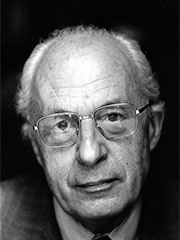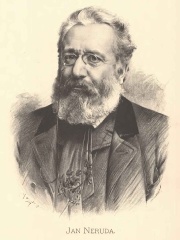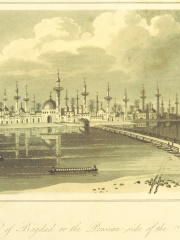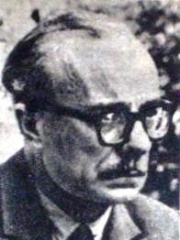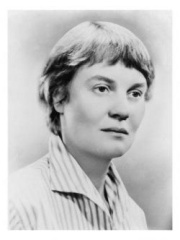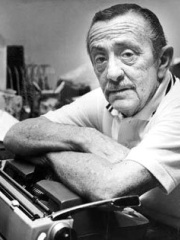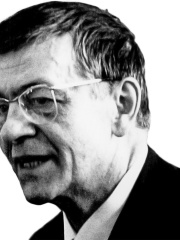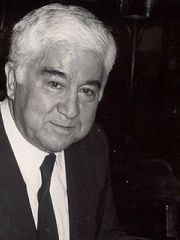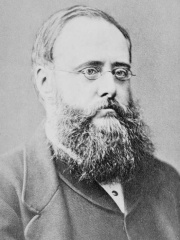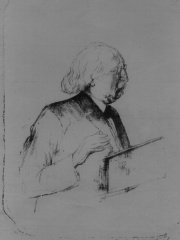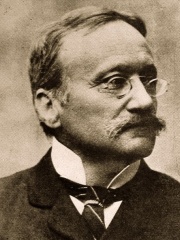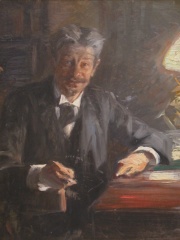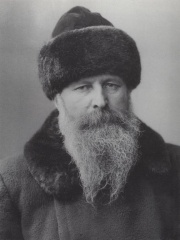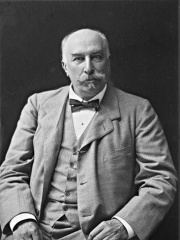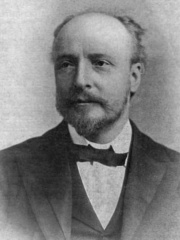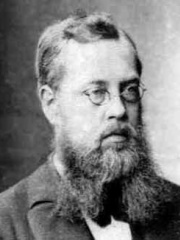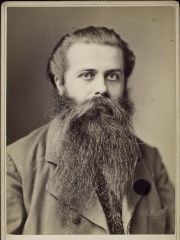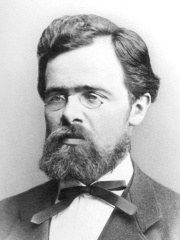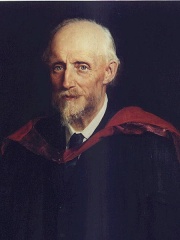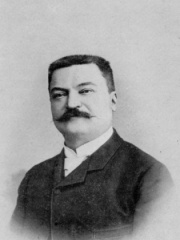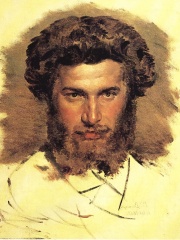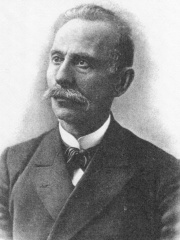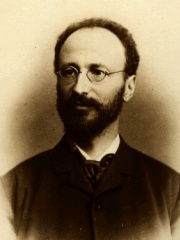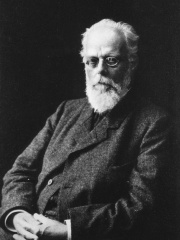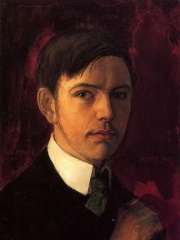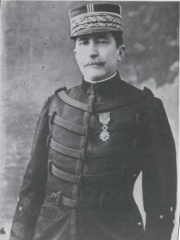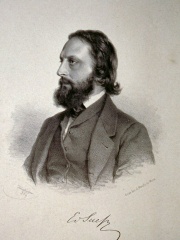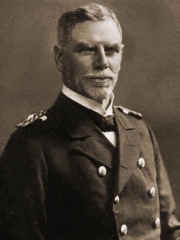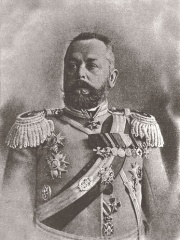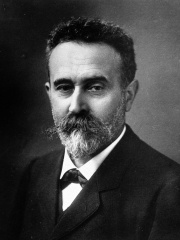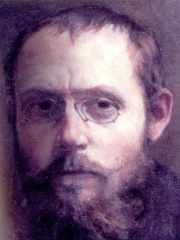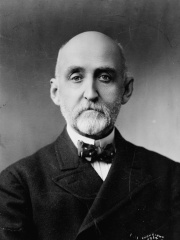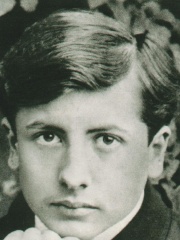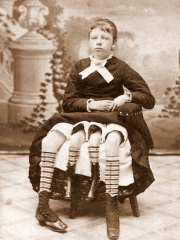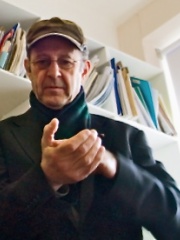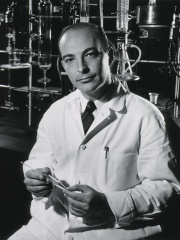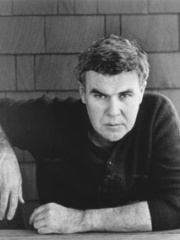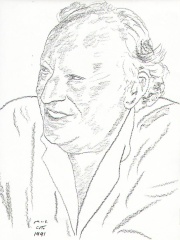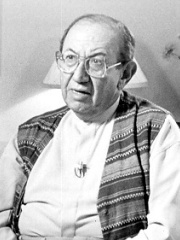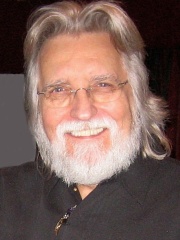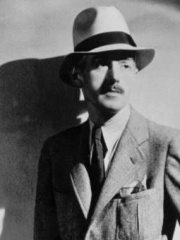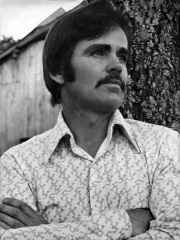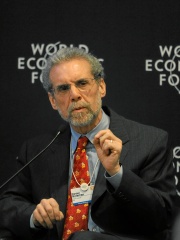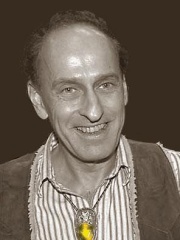WRITER
Ambrose Bierce
1842 - 1914
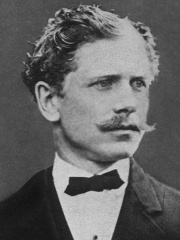
 Ambrose Bierce
Ambrose Bierce
Ambrose Gwinnett Bierce (June 24, 1842 – c. 1914) was an American short story writer, journalist, poet, and American Civil War veteran. His book The Devil's Dictionary was named one of "The 100 Greatest Masterpieces of American Literature" by the American Revolution Bicentennial Administration. His story "An Occurrence at Owl Creek Bridge" has been described as "one of the most famous and frequently anthologized stories in American literature", and his book Tales of Soldiers and Civilians (also published as In the Midst of Life) was named by the Grolier Club one of the 100 most influential American books printed before 1900.A prolific and versatile writer, Bierce was regarded as one of the most influential journalists in the United States and as a pioneering writer of realist fiction. For his horror writing, Michael Dirda ranked him alongside Edgar Allan Poe and H. P. Read more on Wikipedia
Since 2007, the English Wikipedia page of Ambrose Bierce has received more than 2,187,196 page views. His biography is available in 55 different languages on Wikipedia (up from 53 in 2019). Ambrose Bierce is the 861st most popular writer (down from 801st in 2019), the 959th most popular biography from United States (down from 935th in 2019) and the 89th most popular American Writer.
Ambrose Bierce was an American journalist, short story writer, and satirist. His most famous work is the short story "An Occurrence at Owl Creek Bridge."
Memorability Metrics
2.2M
Page Views (PV)
62.93
Historical Popularity Index (HPI)
55
Languages Editions (L)
4.56
Effective Languages (L*)
4.68
Coefficient of Variation (CV)
Notable Works
Page views of Ambrose Bierces by language
Over the past year Ambrose Bierce has had the most page views in the English wikipedia edition with 262,997 views, followed by Spanish (33,715), and Russian (24,600). In terms of yearly growth of page views the top 3 wikpedia editions are Serbian (1,033.04%), Norwegian (Nynorsk) (513.98%), and Bashkir (51.79%)
Among WRITERS
Among writers, Ambrose Bierce ranks 861 out of 7,302. Before him are Philippe Ariès, Jan Neruda, Ibn al-Jawzi, Ernesto Sabato, Iris Murdoch, and John Fante. After him are Philostratus, Peter Weiss, Frederick Forsyth, Aziz Nesin, Wilkie Collins, and Bernard-Henri Lévy.
Most Popular Writers in Wikipedia
Go to all RankingsPhilippe Ariès
1914 - 1984
HPI: 62.97
Rank: 855
Jan Neruda
1834 - 1891
HPI: 62.96
Rank: 856
Ibn al-Jawzi
1116 - 1200
HPI: 62.96
Rank: 857
Ernesto Sabato
1911 - 2011
HPI: 62.94
Rank: 858
Iris Murdoch
1919 - 1999
HPI: 62.94
Rank: 859
John Fante
1909 - 1983
HPI: 62.94
Rank: 860
Ambrose Bierce
1842 - 1914
HPI: 62.93
Rank: 861
Philostratus
170 - 250
HPI: 62.93
Rank: 862
Peter Weiss
1916 - 1982
HPI: 62.93
Rank: 863
Frederick Forsyth
1938 - Present
HPI: 62.92
Rank: 864
Aziz Nesin
1915 - 1995
HPI: 62.91
Rank: 865
Wilkie Collins
1824 - 1889
HPI: 62.91
Rank: 866
Bernard-Henri Lévy
1948 - Present
HPI: 62.90
Rank: 867
Contemporaries
Among people born in 1842, Ambrose Bierce ranks 21. Before him are Hermann Cohen, Arrigo Boito, Georg Brandes, Vasily Vereshchagin, Giovanni Giolitti, and James Dewar. After him are Sophus Lie, Karl Robert Eduard von Hartmann, Carl von Linde, Osborne Reynolds, Édouard Lucas, and Arkhip Kuindzhi. Among people deceased in 1914, Ambrose Bierce ranks 19. Before him are Ismail Gaspirali, Eugen Böhm von Bawerk, August Weismann, August Macke, Georges Picquart, and Eduard Suess. After him are Maximilian von Spee, Alexander Samsonov, Alphonse Bertillon, Charles Péguy, Alfred Thayer Mahan, and Alain-Fournier.
Others Born in 1842
Go to all RankingsHermann Cohen
PHILOSOPHER
1842 - 1918
HPI: 63.75
Rank: 15
Arrigo Boito
WRITER
1842 - 1918
HPI: 63.57
Rank: 16
Georg Brandes
WRITER
1842 - 1927
HPI: 63.53
Rank: 17
Vasily Vereshchagin
PAINTER
1842 - 1904
HPI: 63.11
Rank: 18
Giovanni Giolitti
POLITICIAN
1842 - 1928
HPI: 63.09
Rank: 19
James Dewar
CHEMIST
1842 - 1923
HPI: 63.01
Rank: 20
Ambrose Bierce
WRITER
1842 - 1914
HPI: 62.93
Rank: 21
Sophus Lie
MATHEMATICIAN
1842 - 1899
HPI: 62.72
Rank: 22
Karl Robert Eduard von Hartmann
PHILOSOPHER
1842 - 1906
HPI: 61.85
Rank: 23
Carl von Linde
PHYSICIST
1842 - 1934
HPI: 61.46
Rank: 24
Osborne Reynolds
PHYSICIST
1842 - 1912
HPI: 61.17
Rank: 25
Édouard Lucas
MATHEMATICIAN
1842 - 1891
HPI: 60.89
Rank: 26
Arkhip Kuindzhi
PAINTER
1842 - 1910
HPI: 60.83
Rank: 27
Others Deceased in 1914
Go to all RankingsIsmail Gaspirali
WRITER
1851 - 1914
HPI: 65.65
Rank: 13
Eugen Böhm von Bawerk
ECONOMIST
1851 - 1914
HPI: 65.06
Rank: 14
August Weismann
BIOLOGIST
1834 - 1914
HPI: 64.78
Rank: 15
August Macke
PAINTER
1887 - 1914
HPI: 64.19
Rank: 16
Georges Picquart
MILITARY PERSONNEL
1854 - 1914
HPI: 64.07
Rank: 17
Eduard Suess
GEOLOGIST
1831 - 1914
HPI: 63.27
Rank: 18
Ambrose Bierce
WRITER
1842 - 1914
HPI: 62.93
Rank: 19
Maximilian von Spee
MILITARY PERSONNEL
1861 - 1914
HPI: 62.92
Rank: 20
Alexander Samsonov
MILITARY PERSONNEL
1859 - 1914
HPI: 61.91
Rank: 21
Alphonse Bertillon
INVENTOR
1853 - 1914
HPI: 61.79
Rank: 22
Charles Péguy
WRITER
1873 - 1914
HPI: 61.17
Rank: 23
Alfred Thayer Mahan
WRITER
1840 - 1914
HPI: 61.10
Rank: 24
Alain-Fournier
WRITER
1886 - 1914
HPI: 60.88
Rank: 25
In United States
Among people born in United States, Ambrose Bierce ranks 959 out of 20,380. Before him are Jane Wyman (1917), Michael Cimino (1939), Kim Kardashian (1980), Condoleezza Rice (1954), Myrtle Corbin (1868), and John Fante (1909). After him are Steve Reich (1936), Melanie Griffith (1957), Arthur Kornberg (1918), Geena Davis (1956), Barbara Stanwyck (1907), and Mickey Rooney (1920).
Others born in United States
Go to all RankingsJane Wyman
ACTOR
1917 - 2007
HPI: 62.98
Rank: 953
Michael Cimino
FILM DIRECTOR
1939 - 2016
HPI: 62.96
Rank: 954
Kim Kardashian
CELEBRITY
1980 - Present
HPI: 62.95
Rank: 955
Condoleezza Rice
POLITICIAN
1954 - Present
HPI: 62.94
Rank: 956
Myrtle Corbin
CELEBRITY
1868 - 1928
HPI: 62.94
Rank: 957
John Fante
WRITER
1909 - 1983
HPI: 62.94
Rank: 958
Ambrose Bierce
WRITER
1842 - 1914
HPI: 62.93
Rank: 959
Steve Reich
COMPOSER
1936 - Present
HPI: 62.92
Rank: 960
Melanie Griffith
ACTOR
1957 - Present
HPI: 62.91
Rank: 961
Arthur Kornberg
CHEMIST
1918 - 2007
HPI: 62.91
Rank: 962
Geena Davis
ACTOR
1956 - Present
HPI: 62.90
Rank: 963
Barbara Stanwyck
ACTOR
1907 - 1990
HPI: 62.88
Rank: 964
Mickey Rooney
ACTOR
1920 - 2014
HPI: 62.85
Rank: 965
Among WRITERS In United States
Among writers born in United States, Ambrose Bierce ranks 89. Before him are Raymond Carver (1938), Leon Uris (1924), Maya Angelou (1928), Daniel Keyes (1927), Neale Donald Walsch (1943), and John Fante (1909). After him are Dashiell Hammett (1894), Joseph Campbell (1904), Marilyn vos Savant (1946), Cormac McCarthy (1933), Daniel Goleman (1946), and Roger Zelazny (1937).
Raymond Carver
1938 - 1988
HPI: 63.51
Rank: 83
Leon Uris
1924 - 2003
HPI: 63.43
Rank: 84
Maya Angelou
1928 - 2014
HPI: 63.38
Rank: 85
Daniel Keyes
1927 - 2014
HPI: 63.34
Rank: 86
Neale Donald Walsch
1943 - Present
HPI: 63.16
Rank: 87
John Fante
1909 - 1983
HPI: 62.94
Rank: 88
Ambrose Bierce
1842 - 1914
HPI: 62.93
Rank: 89
Dashiell Hammett
1894 - 1961
HPI: 62.81
Rank: 90
Joseph Campbell
1904 - 1987
HPI: 62.78
Rank: 91
Marilyn vos Savant
1946 - Present
HPI: 62.74
Rank: 92
Cormac McCarthy
1933 - 2023
HPI: 62.71
Rank: 93
Daniel Goleman
1946 - Present
HPI: 62.65
Rank: 94
Roger Zelazny
1937 - 1995
HPI: 62.64
Rank: 95
